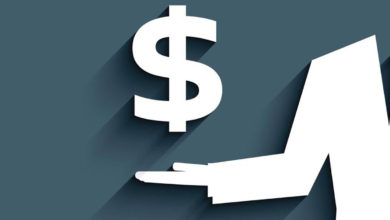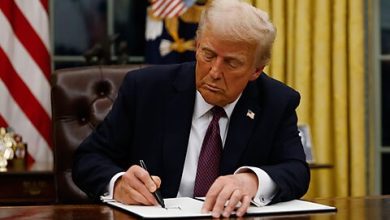Fiscal Accountability and Enhancing the CBO’s Role in Preventing a US Debt Crisis

Transparency and accessibility of information about federal spending are critical for equipping citizens to hold their representatives accountable. The Congressional Budget Office (CBO) serves a crucial function in analyzing government spending. The CBO could do its job more effectively if Congress sharpened the nonpartisan watchdog’s tools to alert policymakers and constituents to looming fiscal threats—well before they escalate into crises.
The House Budget Committee is holding another hearing on this issue today, titled “Congress and the Congressional Budget Office (CBO): Examining Ways to Improve CBO.” Director Phill Swagel will testify again following an earlier hearing in January.
To ensure that the CBO operates as a robust safeguard against fiscal irresponsibility, here are six reforms to enhance transparency and give the public the information needed to hold legislators accountable. Congress is unlikely to pursue corrective fiscal action without public support or until a crisis forces legislators into reactive mode.
Include Projected Interest Costs in Legislative Cost Estimates
One of the most glaring omissions in how the CBO currently provides legislative cost estimates is the lack of projected interest costs. Imagine a family that bought a new car on credit and only budgeted for the car’s list price, without considering the interest they’ll pay on the car loan.
When Congress authorizes new spending or cuts taxes without offsetting reductions elsewhere, the resulting debt incurs future interest costs—costs that the public deserves to see. Including these debt service costs in all significant cost estimates would force lawmakers to confront the more accurate price of their decisions, making it harder to hide behind short-term thinking or budgetary sleight-of-hand. By highlighting the long-term fiscal consequences of today’s policy choices, this reform would ensure the public can better hold lawmakers accountable for the consequences of saddling future generations with debt. As the CBO reported this summer, “adding debt-service effects to cost estimates would be feasible and would require CBO to expend few additional resources.”
Report Regularly on Emergency Designations
Emergency designations, though increasingly common, remain largely opaque to the public. This lack of transparency enables Congress to increase spending without the scrutiny it deserves. Imagine a household that agreed to live within a budget, regularly labeling expected purchases as “emergencies” to spend more than their budget allows.
The CBO should regularly report on all emergency-designated spending, including historical data, to shed light on how much this spending contributes to the ballooning fiscal imbalance. As my colleague Dominik Lett and I have documented, emergency-designated spending and associated interest costs have contributed about $14 trillion to the US debt over the past 30 years, at the same time that Congress is increasingly abusing emergency spending to evade statutory spending limits. By producing regular reports, the CBO can provide citizens with the data they need to track how often Congress invokes “emergencies” to bypass fiscal rules and bring the heat to hold legislators accountable for fiscal profligacy. A recent House Budget Committee draft would require legislators to justify new emergency spending and require the government to track and report on cumulative emergency spending in each fiscal year. This is a good starting point.
Remove Emergency Spending from the Budget Baseline
Emergency spending is supposed to be reserved for rare and unforeseen circumstances. However, Congress has turned it into a budgeting loophole, abusing a tool for temporary provisions to fund permanent fixtures in the budget. Imagine a household keeping two sets of books, one that reflects their approved budget and another with temporary emergency expenditures baked in to allow the household to spend more than their budget allows every year. Congress is operating on that second set of books.
The CBO’s baseline projections, which form the basis for most cost estimates, should exclude emergency spending. Currently, the baseline counts base discretionary and emergency spending together, assuming both grow each year with inflation. This assumption holds even for supposedly one-time emergency spending. Thus, continued spending at the previous year’s level can counterintuitively be scored as a deficit reduction relative to the baseline.
Excluding emergency appropriations from the CBO’s baseline projections would help to reduce the bias toward higher spending and better reflect that emergency spending should respond to necessary, sudden, urgent, unforeseen, and not permanent situations. Removing this bloat from the baseline allows the public to better assess the fiscal impact of emergency appropriations, ensuring that “emergencies” aren’t a cover for baking in fiscal irresponsibility. Citing our work at Cato, Representatives Glenn Grothman (R‑WI) and Ed Case (D‑HI) have introduced the bipartisan Stop the Baseline Bloat Act to remove emergency spending from the baseline budget.
Produce Legislative Cost Estimates Using a Realistic Baseline
The current CBO baseline assumes that some temporary provisions, like expiring tax cuts, will disappear as scheduled, even when historical evidence shows otherwise. This unrealistic assumption distorts cost estimates and encourages legislators to exploit temporary provisions for short-term gain, knowing they’ll likely be extended. Imagine a household that adopts a dog but budgets for only five years of dog food and vet care, even though everyone in the household knows that it’s highly unlikely they’ll send the dog to a shelter when the five years are up.
Including a more realistic alternative baseline that reflects the fiscal path Congress is likely to take provides a clearer picture of the long-term impact of today’s decisions. Including such a realistic baseline among current cost estimates would expose Congress’s reliance on gimmicky offsets and understating the long-term costs of new proposals, helping the public better understand the full cost of legislative proposals. Similarly, if Congress excluded emergency spending from the baseline as I suggest above, CBO should consider including emergency expenditure extensions in the alternative baseline, assuming Congress continues to rely on it as a budget-busting gimmick.
Make Appropriations Scores Publicly Available
The CBO’s analysis of appropriations bills is detailed and insightful, but it is not made available to the general public. As a result, lawmakers and their constituents are often left in the dark about the true impact of spending bills until after they pass—especially when it comes to Congress padding the budget with gimmicks and emergency designated spending. Imagine a household that votes on their annual budget without full transparency, only to find out after the fact that they voted on a bigger budget than they had thought because some of the provisions to save money were fake or there were extra buckets of money labeled as emergency provisions.
By making appropriations scores public, the CBO would empower all legislators and the public to monitor and challenge reckless spending decisions before they become law. Transparency is key to accountability; ensuring that decisionmakers and the public have access to CBO data will help expose budget gimmicks, like emergency designations and changes to mandatory programs (CHIMPs) before they’re buried in legislation.
Require Fair-Value Accounting for Federal Credit Programs
The way the federal government accounts for its loan and credit programs grossly understates the financial risks that taxpayers are exposed to. Unlike the private sector, which factors in market risk, federal accounting methods understate the possibility of default when estimating the cost of these programs. Imagine a family that takes out a variable rate mortgage but only budgets for the initial loan amount at the current rate, thus neglecting the risk of future interest rate increases or the possibility that their income might not keep pace with fluctuations in interest rates, making it harder to repay the loan down the road.
Requiring the CBO to use fair-value accounting, as the private sector does, would provide a more honest accounting of the risks that taxpayers are being asked to bear. This reform would arm both Congress and the public with the information needed to understand the real costs of federal credit programs, improving fiscal decision-making and accountability.
Alarming Debt Calls for Greater Accountability and Fiscal Discipline
In an era where debt is rising at an alarming rate, these reforms would sharpen the CBO’s ability to serve as a crucial early warning system, alerting both the public and policymakers to looming fiscal threats before they spiral into a full-blown debt crisis. By embracing enhanced transparency and realistic accounting, the CBO would equip citizens with the tools needed to hold Congress accountable and expose the budgetary gimmicks and short-term fixes that have long evaded scrutiny. These changes could help to shift policymaking from reactive crisis management to proactive fiscal responsibility, ensuring that the government takes deliberate action to avoid potential disasters rather than reacting only when the fiscal house is on fire.





